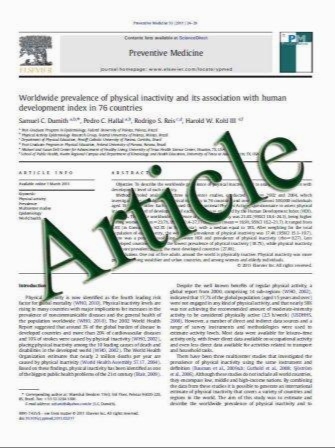FDG-PET for the diagnosis of fever of unknown origin: a Japanese multi-center study
- نوع فایل : کتاب
- زبان : انگلیسی
- مؤلف : Kazuo Kubota Yuji Nakamoto Nagara Tamaki Kakuko Kanegae Hiroshi Fukuda Tomohiro Kaneda Kazuhiro Kitajima Ukihide Tateishi Miyako Moroo
- چاپ و سال / کشور: 2011
Description
Objective To evaluate the clinical value of 2-[18F]fluoro- 2-deoxy-D-glucose positron emission tomography (FDGPET) for the diagnosis of fever of unknown origin (FUO), we performed a Japanese multi-center retrospective survey. Methods A total of 81 consecutive patients with FUO who underwent FDG-PET at 6 institutions between July 2006 and December 2007 were retrospectively evaluated. FDG uptake was visually evaluated using a 4-grade scale. The efficacy of FDG-PET for the evaluation of FUO, the provision of additional diagnostic information, the clinical impact on therapeutic decisions (4-grade scale), and the diagnostic performance compared with the final diagnosis were evaluated. Results The diagnostic results were analyzed according to 4 groups of final diagnoses: infection, arthritis/vasculitis/ autoimmune/collagen disease (A/V), tumor/granuloma (T/G), and other/unknown (O/U). Sensitivity was highest in T/G, followed by infection, A/V and O/U [100%(7/7), 89%(24/27), 65%(11/17), 0%(0/1) respectively]. Clinical impact and mean FDG score showed the same tendency. Additional information was highest in infection followed by T/G, A/V, and O/U [76%(22/29), 75%(6/8), 43%(9/21), 23%(5/22), respectively]. The O/U group showed a high specificity (84%, 16/19) and accurately excluded active focal inflammatory diseases and malignancy. The use of steroids for the treatment of fever seemed to mask the lesions and modified the results, especially in the A/V group (4 false negatives in 8 steroid users out of 21 A/V patients). The prevalence of each disease in each hospital significantly affected the effectiveness of FDG-PET for the diagnosis of FUO. The mean FDG uptake score and additional information (70%, 31/44 vs. 30%, 11/37, respectively) in national hospital (NH) was significantly higher than in university hospitals (UH). A Grade 3 clinical impact, in which the FDG PET results changed the clinical decision, was seen in 50% (22/44) of the patients in the NH group and 13.5% (5/37) of the patients in the UH group. The sensitivity (91%, 30/33; 63%, 12/19) and specificity (60%, 6/10; 86%, 12/14) of the results in the NH and UH groups differed. The total sensitivity was 81% (42/52), specificity was 75% (18/24). The NH group included a large number of cases with infectious diseases (50%, 23/44), while the UH group included a large number of A/V cases (38%, 14/37) and O/U cases (41%, 15/37). Conclusion FDG-PET for the diagnosis of FUO provided additional diagnostic information and had a high clinical impact, especially among patients with infectious diseases. It was also helpful in caseswith unknown or othermiscellaneous diseases by allowing the exclusion of focally active diseases. The prevalence of diseases in hospitals significantly affected the effectiveness ofFDG-PETfor the diagnosis ofFUO.FDGPET is a useful examination providing various degrees of clinical impact for the management of FUO, depending on the characteristics of the patient and the hospital.
Ann Nucl Med (2011) 25:355–364 DOI 10.1007/s12149-011-0470-6 Received: 21 October 2010 / Accepted: 7 January 2011 / Published online: 23 February 2011


